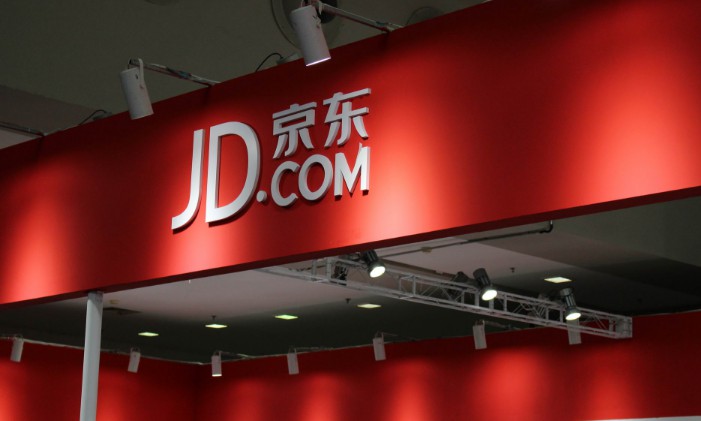JD.com has finally begun to accelerate the layout of social e-commerce.
In March 2018, JD.com increased its support for JD.com's group purchase, which was already online in 2016, and provided an entrance to the channels of the six major business units; in the same month, the social e-commerce micro-selectronics launched by the joint venture established with Meili United Group was launched. On April 24, JD.com launched the Kepler Light Mall mini program - the previous Kepler Mall was only for contracted customers of the original JD.com Mall, while the light Mall was completely open to all brand owners, and also carried out "unprecedented" major promotions.
Behind the intensive punches is the current situation of this e-commerce giant, which accounts for the second largest proportion in China's B2C market, "there are strong enemies in front and pursuers in the back". In the post-e-e-commerce era when traffic dividends begin to decline, backing Tencent, the traffic "rich mine", JD.com hopes to "overtake on the curve" - if JD.com Pinzhu is a defensive tactic adopted by Pinduoduo to a certain extent, and JD.com's more profound plan is to dig deep into social exchanges and seize more retail scenarios, thereby locking in more brand manufacturers to compete with its competitors.
This is a good opportunity for JD.com, but will it really get what it wants?

Send first and then arrive
In fact, it was not too late for JD.com to start exploring social e-commerce. As early as May 2014, it obtained the shopping portal "JD.com WeChat Shopping", which was opened by WeChat. This is also the only first-level shopping portal in WeChat at present.
However, JD.com WeChat Shopping, which was uniquely gifted, did not "ignite" when social retail arrived, but was instead stolen by the "later" Pinduoduo.
Pinduoduo was founded in 2015 and has quickly become popular with the traffic of Tencent, a major shareholder. Data shows that in 2017, JD.com had 1.3 trillion GMV and 292.5 million active users; while Pinduoduo, which has been established for more than two years, has 300 million active users, and its monthly GMV has exceeded 10 billion.
Some comments attributed this to JD.com's early strategy in social e-commerce was conservative. It is established to a certain extent, because when JD.com was launched, Tencent had just acquired a stake in JD.com. This part of the business was actually the product of the previous integration of Tencent QQ online shopping, Paipai e-commerce and logistics departments. It will take time to get along with JD.com's overall business.
For example, data matching. Zhang Jing, director of the marketing center of JD.com WeChat Mobile Q Business Department, said, "The first step in WeChat is to use WeChat as a shopping entrance, but there is no JD.com user tag in WeChat. You must slowly match shopping and social tags, so that you can enter the second step, which is to realize the integration of product and sales as mentioned in the Jingteng Plan."
This is still JD.com's consistent "centralized" e-commerce model. Moreover, compared with the lightweight market of emerging social e-commerce such as Pinduoduo, the launch of JD.com's social e-commerce continues to be a heavy-duo model, so it has not triggered a social fission like Pinduoduo.
Of course, this has both pros and cons. On the one hand, centralization can aggregate traffic and data, so it can achieve more accurate marketing. In fact, Pinduoduo is currently facing the trouble of growth and has begun to try to make heavy work, because WeChat traffic cannot be "kept on your own", so Pinduoduo has also built its own APP. Its founder and CEO Huang Zheng said in a recent interview with Caijing magazine that the number of orders from APPs has now far exceeded 50%.
In other words, only based on the research of "own" seed users can JD WeChat Shopping accumulate and accumulate more "playing methods" and models of social e-commerce, such as social cubes containing 20 social scenarios and tools, a variety of marketing techniques, etc., which can become part of the service modules provided by JD Kepler now.
"In mid-2017, JD.com made it very clear that we would transform from an e-commerce shopping platform to a retail infrastructure service provider. In the past, JD.com was more closed and completed its own product procurement, sales, and shopping organizations. Now it hopes to componentize and modularize its capabilities to help the retail industry." Xu Lei, CMO of JD.com Group, said at the previous Jingteng 3.0 press conference.
This "open" idea will definitely affect JD's social e-commerce positioning. From centralized operations to strengthening the decentralized model, the transfer of power will exchange for a larger market space. Perhaps JD has gradually realized that only by breaking its own data siege can it be closer to the goal of "boundaryless retail".
E-commerce "changes"?
Therefore, JD.com is also rapidly mobilizing and strengthening the power of social e-commerce inside and outside its system.
For example, JD.com Grouping was previously promoted by a single channel, but now it is independently pulled out, and 6 major channels are promoted together. During the JD.com Grouping Festival in March 2018, the daily peak of the number of new users brought by the event was as high as 6 times the average of the day before the event.
"The threshold for JD.com group purchases is lower than that of JD.com. I hope to attract more incremental merchants; whether in the city or the user dimension, it focuses on the sinking market," said Zhang Jing.com group purchases can now go global as an independent product form, representing JD.com to sink.
If JD.com Pinduoduo is to resist Pinduoduo, then this is just a "small goal" of JD.com social e-commerce, and the bigger goal is to continuously strengthen the connection with brand owners through WeChat, the largest traffic weapon at present, so that it has more bargaining chips in its confrontation with Alibaba.
For example, the Jingteng plan started in 2015 was actually more focused on advertising marketing in the first two years, while 3.0 in 2018 clearly proposed that it would use Tencent’s official account, mini programs, payment and other tools, as well as JD’s membership system, supply chain, logistics and financial systems to fully connect online and offline marketing scenarios, achieving three major upgrades in data, scenarios and links.
When the WeChat mini program was launched in January 2017, Kepler launched the "Beijing Mall" mini program, but it is only for merchants who have settled in JD.com. According to Lu Yinhong, general manager of JD.com, Kepler can help brands complete the release of mini program within one day as soon as possible. Currently, there are more than 2,000 merchants on JD.com. The difference between the light mall that just launched is that it is incremental merchants. These merchants may not sign contracts with JD.com, and some merchants have not even had "online sales" experience before.
"Beijing Mall and JD Mall are one-stop connections and management. In the past, different categories had different deductions. Now, except for a few special categories, the deductions have been unified to 1% deductions, and the service fees and deductions of light malls are completely free." Lu Yinhong said that this is also a special policy for the entire 2018. Whether it is Beijing Mall or Light Mall, the target of "leading brand manufacturers" at this stage.
This is exactly what JD.com’s opponent Tmall is strictly guarding against. For Alibaba and JD.com, the "two-choice one" war has already begun and is becoming increasingly fierce. In the future, will these brand commerce companies become closer to JD.com because of the attractiveness of mini programs? Can social e-commerce win a comeback for JD?




![#Laogao E-commerce Newsletter#[E-commerce Evening News Brief on August 18]](/update/1597741235l402479764.jpg)


 EN
EN CN
CN
